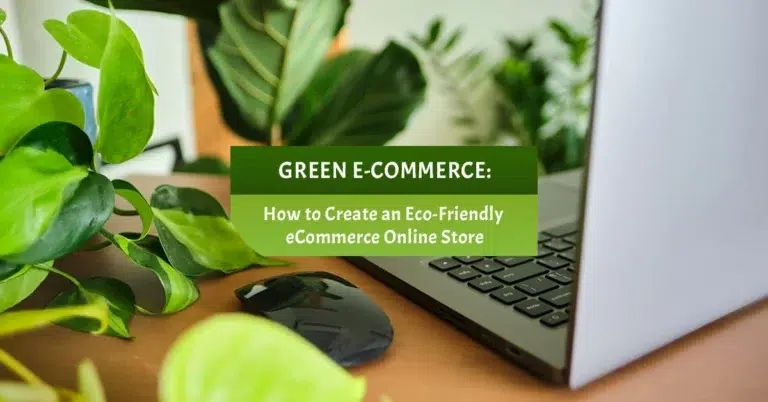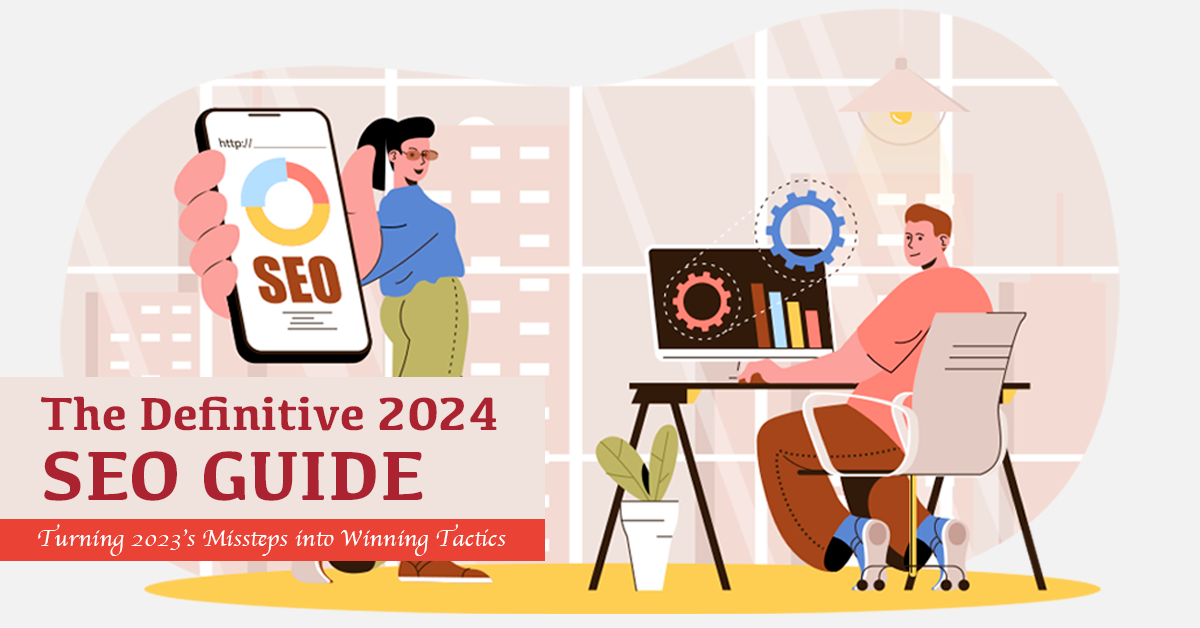
Creating an ultimate on-page seo guide involves covering various key elements that are essential for optimizing individual web pages to rank higher and earn more relevant traffic in search engines. Here’s a structured outline for an article on this topic:
1. Introduction to On-Page SEO
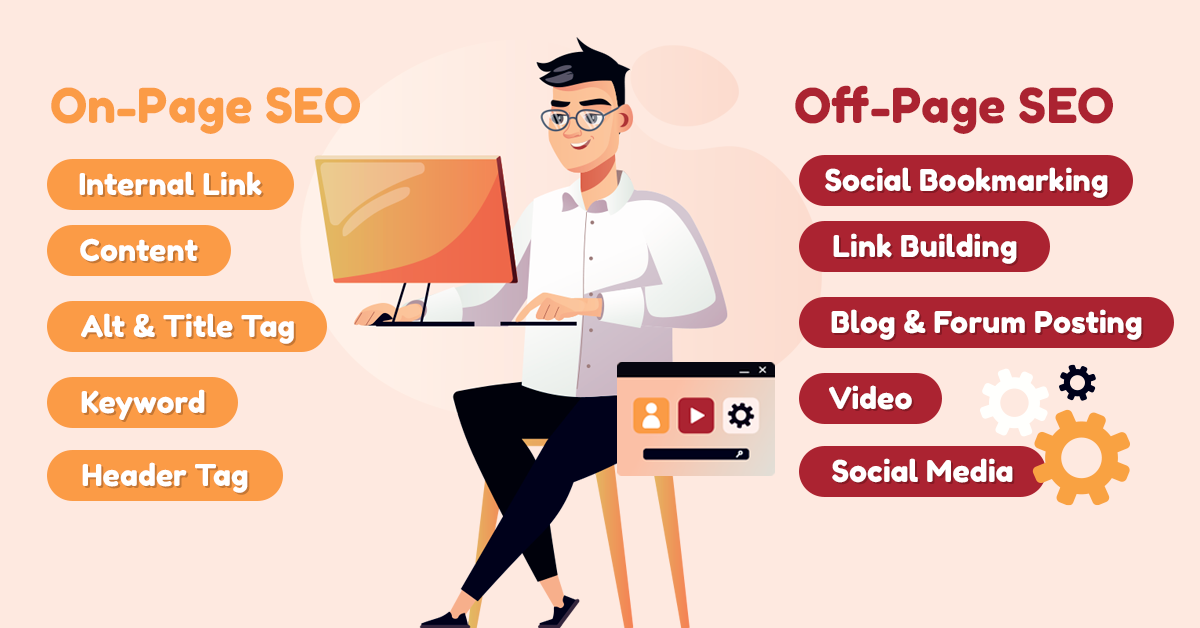
On-page SEO is a vital component of search engine optimization, concentrating on enhancing elements within a website to boost its ranking and visibility in search engine results pages (SERPs). Distinct from off-page SEO, which relies on external factors like backlinks, on-page SEO zeroes in on optimizing a website’s content and structure. This aspect is essential for conveying to search engines and users the relevance and value of a website’s content.
The significance of on-page SEO extends beyond just Google; it’s crucial for ranking in other search engines as well. By optimizing on-page elements, websites can improve their visibility in organic search results across various search engines, thereby reaching a broader audience. This includes fine-tuning titles, content, images, URLs, and ensuring a high level of usability and a superior user experience. Effective on-page SEO strategies enable websites to climb higher in search rankings, draw in more organic traffic, and achieve their online marketing objectives more efficiently.
Staying up-to-date with the evolving nature of on-page SEO is also essential. As search engine algorithms, including those of other search engines, grow more advanced, the standards for effective on-page SEO adjust accordingly. It’s crucial to keep abreast of these changes and continuously refine website elements to align with the latest SEO trends and guidelines. Therefore, on-page SEO is not a one-off effort but an ongoing commitment, crucial for maintaining and improving the online visibility and success of a website in an increasingly competitive digital landscape.
By integrating on-page SEO with other strategies like off-page SEO, website owners can create a comprehensive SEO strategy that addresses all aspects of search engine optimization. This holistic approach ensures that a website is well-equipped to perform optimally in organic search results, not just on Google but across all major search engines.
2. Understanding Search Engines

Search engines serve as critical navigators in the digital world, guiding internet users to the content they seek. Understanding how search engines work is fundamental to any SEO strategy. These engines, including giants like Google, Bing, and Yahoo, operate by deploying search engine crawlers. These crawlers traverse billions of web pages, indexing the discovered content. Subsequently, complex algorithms come into play, sorting these pages to present them in response to relevant search queries.
At the core of search engine functionality are these algorithms, comprising a comprehensive set of rules and criteria. These algorithms are designed to assess the relevance and quality of web pages, constantly evolving to enhance user experience by returning the most pertinent and high-quality content results. They analyze various factors, such as keyword relevance, site architecture, and user engagement metrics, to determine a page’s ranking.
The ever-changing algorithms of search engines necessitate that SEO professionals and website managers stay updated with the latest trends and algorithmic shifts. Major updates from search engines, like Google’s Panda, Penguin, and BERT, have historically reshaped the SEO landscape, penalising poor-quality content while rewarding pages that provide genuine value to users.
Grasping how search engines work involves more than understanding their technical processes; it’s about comprehending the intent behind users’ search queries. This insight is crucial, as it influences how search engines analyze and fulfil these queries. A profound understanding of this dynamic helps in effectively optimizing web pages and adapting to evolving SEO practices. In essence, thorough knowledge of search engine operations and user query intent is indispensable for effective on-page SEO, guiding optimization efforts to align with the ways search engines evaluate and rank web content.
3. Keyword Research
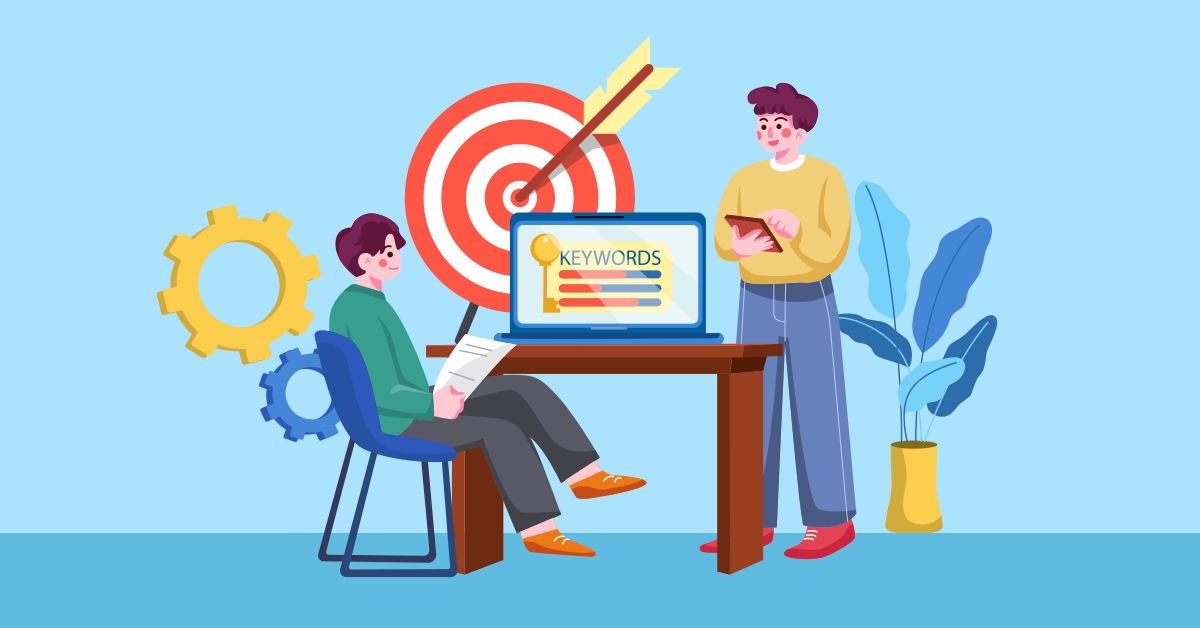
Keyword research stands as a cornerstone in on-page SEO, acting as a strategic guide for crafting content that resonates with user needs and search engine preferences. This process starts with grasping the topics and terms your intended audience searches for, which lays the foundation for producing content that not only answers their queries but also aligns with their search intent. Utilizing tools like Google Keyword Planner, SEMrush, Ahrefs, and Moz Keyword Explorer is vital in this process. They offer valuable insights into keyword search volumes, competitive landscapes, and related terminology.
A critical aspect of keyword research is understanding the intent behind keywords, which can be informational, navigational, transactional, or commercial. Grasping this search intent is a direct Google ranking factor and is key to crafting content that not only answers user queries but also aligns with their underlying intent, thus enhancing the chances of ranking well in search results.
Additionally, focusing on long-tail keywords, which are typically more specific and lengthier phrases, is highly beneficial. These keywords often have lower competition and clearer user intent, making them potent tools for attracting targeted traffic to your site. Integrating these long-tail keywords seamlessly into your content, along with your primary or target keyword, can significantly boost the relevance and visibility of your pages.
In essence, effective keyword research transcends the mere identification of high-volume search terms. It involves a deep understanding of your audience, their search behaviors, and the fine-tuning of your content to cater to their needs and relevant search queries. This strategic approach is pivotal in elevating your website’s on-page SEO efficacy.
4. Optimizing Content for Search Engine Optimization

Optimizing content for on-page SEO is an indispensable step in bolstering a website’s visibility and ranking in search engine results. This process pivots on crafting high-quality content that resonates with the user’s search intent while providing value and engaging the audience. A strategic approach to keyword usage is essential, embedding primary and related keywords organically into the content. This practice must be balanced, ensuring that the content remains informative and enjoyable, adhering to search engine guidelines.
The significance of long-tail keywords cannot be overstated in this context. These more specific, often less competitive phrases cater to niche audiences, effectively addressing their unique queries. Long-tail keywords are particularly adept at driving higher conversion rates due to their association with a more defined intent to purchase or engage.
Content marketing strategies should also consider the optimization of non-textual elements like images and videos. Using descriptive file names and alt tags for images enhances their searchability, contributing positively to the page’s SEO. Such optimizations make the content more accessible and enrich the user experience.
Moreover, refreshing and updating existing website content is a key aspect of content optimization. Search engines show a preference for updated, relevant content. Regularly revisiting and revising older posts can significantly uplift their visibility and relevance. Updates could include new statistics, recent information, or adjustments to align with evolving SEO best practices.
Effective structuring of content with appropriate headings and subheadings, utilizing H1, H2, H3 tags, not only aids in SEO but also in enhancing readability. This organization helps search engines discern the content’s structure and relevance, potentially boosting the page’s ranking prospects.
By focusing on these elements, optimizing content for on-page SEO emerges as a potent strategy, not just for elevating a website’s search engine rankings but also for strengthening its overall digital footprint.
5. Title Tags and Meta Descriptions
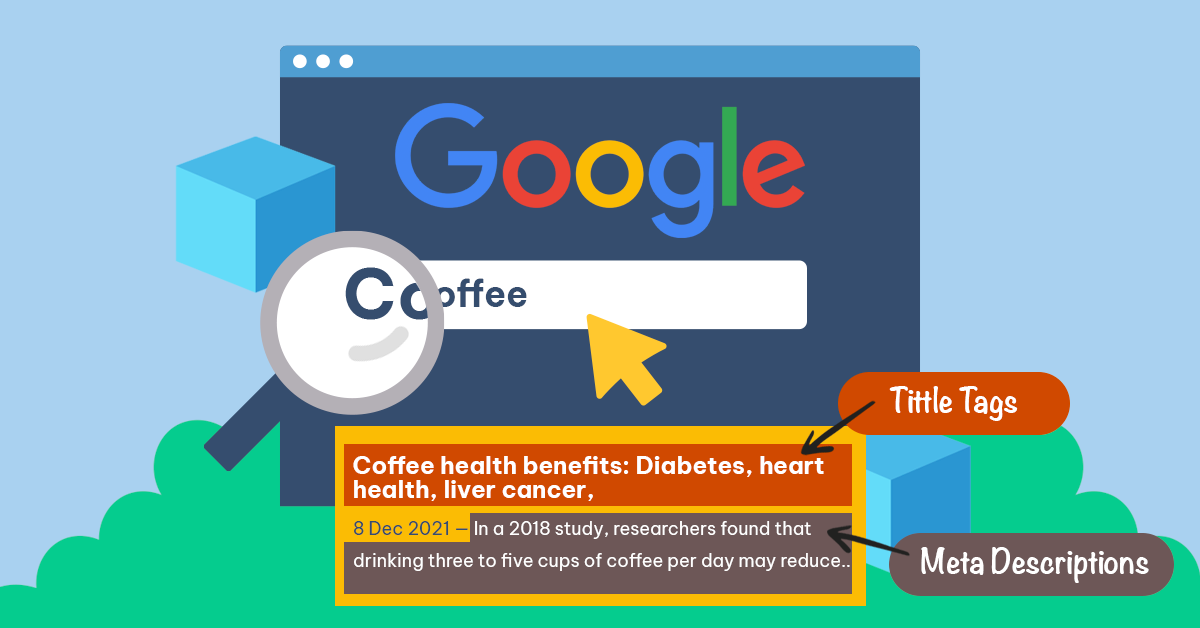
Title tags and meta descriptions are fundamental components of on-page SEO, serving as critical gateways that draw users from the search engine results page (SERP) to your website. They create the first impression, akin to a digital handshake. Title tags, the clickable headlines in search results, are essential for providing a snapshot of the page’s content. They should be concise, engaging, and incorporate the target keyword to effectively communicate the page’s theme to both search engines and users. Ideally, title tags should be kept under 60 characters to ensure full visibility on SERPs.
Meta descriptions, conversely, offer a succinct summary of the web page. While not a direct Google ranking factor like title tags, they significantly influence click-through rates. These descriptions function as ad copy, enticing users to click on your link. To craft effective meta descriptions, they should be action-oriented, clearly state the value proposition, and include a call-to-action. Incorporating meta tags, particularly meta description tags, is an opportunity to use secondary keywords and related terms, thus enhancing the page’s relevance. Each meta description should be distinctive, about 150-160 characters long, and precisely encapsulate the page content to ensure users are not misled.
Furthermore, the integration of title tags and meta descriptions with the content of the page is vital. This coherence is crucial for user experience, impacting factors such as bounce rates and user engagement. In the realm of evolving SEO, regularly revisiting and updating these elements is beneficial, particularly to stay aligned with dynamic keyword trends and user preferences. Additionally, adhering to the core web vitals, which encompass various user experience aspects, can further optimize the performance of these elements.
By skillfully managing title tags and meta descriptions, websites can significantly boost their visibility and appeal in search engine results. This optimization leads to enhanced user engagement and higher conversion rates, leveraging these elements as powerful tools in a comprehensive SEO strategy.
6. Headers and Subheaders

Headers and subheaders play a pivotal role in on-page SEO, significantly contributing to both the search engine optimization and readability of your content. When we refer to headers, we’re typically talking about the HTML tags H1, H2, H3, and so on. These tags serve as a guide to both your readers and search engines, helping them understand the structure and hierarchy of your content.
Importance of the H1 Tag
The H1 tag is particularly crucial. It’s often considered the main headline of a page and should encapsulate the core theme or topic. Best practices suggest that every page should have a single H1 tag, including your primary keyword. This not only aids search engines in understanding the main focus of your page but also provides a clear, concise headline for your readers.
Subheaders (H2, H3, H4, etc.)
Subheaders such as H2, H3, and further, help in breaking down your content into smaller, more digestible sections. They act like signposts, guiding readers through the article and making it easier to skim. For SEO, including relevant secondary and tertiary keywords in these subheaders can be beneficial. However, it’s important to maintain a natural flow and not overstuff keywords, as this can be detrimental to both readability and SEO.
Enhancing Readability
Good use of headers enhances the readability of your content. It organizes your writing, making it more scannable for readers who often skim through articles online. Well-structured headers can significantly improve the user experience, which is a factor search engines take into account when ranking pages.
Reflecting Content Structure
From an SEO perspective, headers reflect the structure of your content to search engines. A well-organized page with clear headings and subheadings is more likely to be understood by search engine algorithms, which in turn, can positively impact your page’s ranking. This structure also aids in featured snippets and other search engine features that aim to directly answer user queries.
Best Practices
When creating headers, focus on clarity and relevance. Ensure that they accurately reflect the content within each section. Avoid vague or misleading headers, as they can frustrate users and increase bounce rates, negatively affecting your SEO efforts. Also, maintain a hierarchy in your headings – an H2 should be used for main subsections, H3 for points within those subsections, and so on. This hierarchy adds to the clarity and structure of the content.
In summary, headers and subheaders are more than just formatting tools; they are essential elements of on-page SEO. They help in organizing content, improving user experience, and making your page more attractive to search engines. A well-implemented header strategy can significantly enhance the effectiveness of your SEO efforts.
7. Optimizing Images

Images play a pivotal role in enhancing the user experience on a website, but if not optimized properly, they can adversely affect page load speed and, consequently, SEO performance. Optimizing images involves several key steps:
File Format and Compression
Choosing the right file format is essential. Formats like JPEG are generally best for photographs with a variety of colours, while PNGs are better for images with transparency or text. Image compression tools can significantly reduce file sizes without noticeably sacrificing quality, thereby improving page load times.
Descriptive Filenames
Naming image files with descriptive, keyword-relevant names is crucial for SEO. Instead of using generic filenames like “image1.jpg,” use names that describe the image and, if possible, include a relevant keyword. For example, “freshly-baked-chocolate-chip-cookies.jpg” is more informative for search engines.
Alt Text
Alt text (alternative text) provides a textual description of an image for search engines and for users who are unable to see them. This is not only beneficial for SEO but also crucial for web accessibility. The alt text should be concise and describe the image accurately. Including keywords where appropriate can further enhance SEO.
Responsive Images
With the diverse range of devices used to access websites, ensuring images look good on all devices is important. Using responsive image techniques, such as the HTML srcset attribute, allows the browser to choose the best image size for a given screen, improving load times and user experience.
Image Sitemaps
For websites with a large number of images, or where images are not easily discoverable by search engines (like in JavaScript galleries), creating an image sitemap can help search engines discover and index your images.
Lazy Loading
Implementing lazy loading can also boost web page speed, especially for pages with many images. This technique ensures images are only loaded when they are about to enter the viewport, reducing initial page load time.
Image Size and Quality
Striking the right balance between size and quality is crucial. Large, high-resolution images can drastically slow down page load times. Reducing the dimensions of the image to the maximum size it will be displayed can help reduce the file size.
Use of Content Delivery Network (CDN)
For websites with a global audience, using a CDN can significantly improve image load times. CDNs store copies of your images in multiple, geographically diverse data centres, ensuring faster delivery to users around the world.
By implementing these image optimization techniques, you not only enhance the user experience but also improve the SEO of your web pages. Optimized images contribute to faster page load speeds, better user engagement, and potentially higher rankings in search engine results.
8. URL Structure

The URL structure of a webpage is an integral aspect of on-page SEO, playing a vital role in both user experience and search engine rankings. A well-formulated URL is straightforward and memorable for both users and search engines, providing a clear indication of the page’s content. Incorporating relevant keywords in URLs boosts their visibility in search results, aiding in discoverability. However, it’s essential to avoid keyword stuffing, as it can appear spammy and detract from the user experience.
An effective URL is characterised by its brevity. Shorter URLs are not only easier to read and share but also tend to perform better in search rankings. While incorporating relevant keywords is beneficial, URLs should remain succinct and not overly complex. Moreover, a consistent and logical URL structure across a website enhances user navigation and understanding of the site’s content hierarchy.
Hyphens are preferred over underscores for word separation in URLs, as they are more readable and favoured by search engines. Lowercase letters should be used consistently, as URLs are case-sensitive, helping to avoid confusion and link errors.
Incorporating the URL structure into broader digital marketing strategies, such as link building and social media marketing, can further augment its effectiveness. For instance, a well-structured URL is more likely to be shared and linked back to, enhancing its value in link building campaigns. Similarly, URLs that are clear and descriptive are more shareable on social media platforms, potentially increasing reach and engagement.
For local businesses, the URL structure can also play a significant role in local SEO. Including location-specific keywords or terms can help local customers find the business more easily in search results.
Overall, the URL structure is not just a technical element of a website; it tells search engines and users alike about the content of the page. A carefully planned and executed URL structure is user-friendly, keyword-optimized, and devoid of unnecessary complexities. Such a strategic approach not only improves user experience but also contributes significantly to enhanced search engine visibility and ranking.
9. Internal Linking
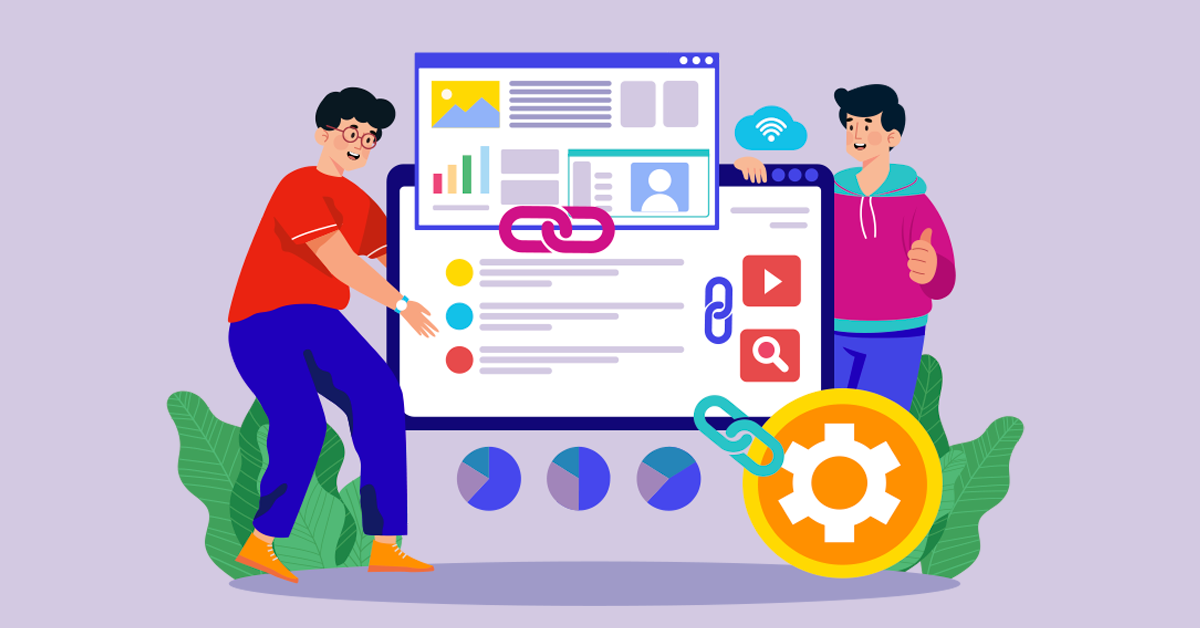
Internal linking, the practice of connecting one page of a website to another within the same domain, is a vital element of on-page SEO, including aspects of technical SEO. It plays a key role in shaping site architecture and distributing link equity (ranking power) across the site, which aids search engines in efficiently crawling and indexing pages. This process establishes the context and interrelation of pages within the website’s overall framework.
The anchor text used in internal linking is critical. It should be relevant to the destination page and utilize natural, descriptive language. Avoid over-optimizing anchor text as it might seem manipulative to search engines.
Placement of internal links is equally important. Links within the main body of a page typically carry more weight than those in less prominent areas like the footer or sidebar. Strategic placement not only aids in SEO but also boosts user experience by offering pertinent additional information at opportune moments in their content journey.
Internal linking can effectively reduce bounce rates by encouraging site exploration, leading to increased engagement. This user behavior is a positive signal to search engines, indicating the provision of valuable content, which can favourably impact rankings.
Additionally, internal linking supports content clustering, where related content is grouped around a core ‘pillar’ page. This approach bolsters thematic relevance, helping to establish authority in a specific subject area and enhancing the ranking potential of particular pages.
Internal linking also plays a strategic role in guiding users to high-value pages geared towards conversions, like product pages or contact forms. By judiciously adding internal links on informative pages, you can subtly steer potential customers deeper into the sales funnel.
In essence, internal linking transcends mere navigation; it’s a strategic facet of on-page SEO that enriches site structure, bolsters user engagement, and strengthens the thematic relevance and authority of a website. Adhering to best practices in anchor text, link placement, and content clustering, internal linking can significantly elevate a website’s visibility and performance in search engine results.
10. Smartphone and Mobile Optimization

In today’s digital landscape, mobile optimization is a critical aspect of on-page SEO, primarily due to the widespread use of smartphones for internet access. With the introduction of mobile-first indexing by search engines like Google, the mobile version of your website is now considered the primary version for indexing and ranking. This shift underscores the importance of ensuring your website is fully optimized for mobile users.
Optimizing for mobile involves several key elements. Firstly, a responsive website design is essential. This means your site should automatically adjust its layout, images, and content to fit the screen size of various devices, providing an optimal viewing experience. Responsive design not only enhances user experience but also contributes positively to SEO rankings, as search engines favour mobile-friendly websites.
Page load speed is another crucial factor in mobile optimization. Mobile users often have less stable internet connections than desktop users, so it’s important to ensure that your website loads quickly on smartphone devices. Techniques to improve page speed include compressing images, leveraging browser caching, and minimising the use of heavy scripts.
Furthermore, the navigability of your website on a mobile device is paramount. Menus, buttons, and links should be easily clickable, and the text should be readable without requiring users to zoom in. Simplifying the site’s navigation and avoiding pop-ups that can be difficult to close on smartphone devices can significantly enhance the user experience.
In addition to these technical aspects, the content itself must be mobile-friendly. This means short, concise paragraphs with clear headings, and bulleted or numbered lists to improve readability on smaller screens. Ensuring that your content is easily digestible on smartphone devices can lead to longer site visits and lower bounce rates, which are positive signals to search engines.
Lastly, tools like Google’s Mobile-Friendly Test can be used to assess how well your website performs on mobile devices, providing insights on areas for improvement. By focusing on these aspects of mobile optimization, you can ensure a better user experience for mobile visitors and improve your website’s search engine rankings.
11. Page Load Speed

Page load speed is an integral aspect of on-page SEO that significantly influences both search engine rankings and user experience. Search engines like Google prioritise fast-loading websites, as they aim to provide users with quick and efficient access to information. This is particularly important in a world where internet users expect immediate results and have low tolerance for slow websites.
The impact of page load speed on user experience cannot be overstated. Websites that load quickly tend to have lower bounce rates, as visitors are more likely to stay and engage with the content. Conversely, slow-loading pages frustrate users, leading to higher bounce rates and reduced time spent on the site. This not only affects user satisfaction but also indirectly impacts search engine rankings, as search engines interpret these user behavior signals as a measure of the website’s value and relevance.
To optimize page load speed, website owners and developers can employ several strategies. One key approach is image optimization, which involves resizing and compressing images to reduce file sizes without compromising quality. This is crucial because large image files are often the biggest culprits in slowing down web pages.
Another important technique is minimising the use of heavy scripts and plugins that can add extra load time to a page. Simplifying the website’s code, using efficient CSS and JavaScript, and leveraging browser caching are also effective methods to enhance page speed. Additionally, using content delivery networks (CDNs) can significantly improve load times by distributing the content load across multiple servers, thereby reducing the burden on any single server and speeding up access for users worldwide.
Website owners can utilise various tools to assess and improve their page load speed. Google’s PageSpeed Insights is a popular tool that provides valuable insights into how well a page performs and offers specific recommendations for improvement. Implementing these suggestions can lead to significant improvements in page load times, enhancing both the user experience and the website’s SEO performance.
Optimizing page load speed is a crucial element of on-page SEO that directly influences a website’s search engine ranking and user satisfaction. By focusing on strategies to reduce load times, website owners can significantly enhance their site’s performance, both in terms of SEO and overall user experience.
12. User Experience (UX) and SEO

Understanding the intricate relationship between User Experience (UX) and Search Engine Optimization (SEO) is crucial for on-page SEO success. User Experience encompasses all aspects of an end-user’s interaction with a company, its services, and its website. In the realm of SEO, UX primarily focuses on ensuring that visitors find value in what they’re interacting with on your website.
Website Design and Layout
The design of your website should be intuitive and straightforward. A well-organized site with a clear hierarchy not only aids search engines in understanding your content but also makes it easier for users to navigate. The use of white space, readable fonts, and appealing colour schemes contribute to a positive user experience, which can indirectly boost your SEO by increasing time spent on the site and reducing bounce rates.
Content Readability and Accessibility
The content on your website should be easy to read and accessible to all users, including those with disabilities. This involves using clear headings, short paragraphs, and bullet points to break up text. Including alt text for images not only aids visually impaired users but also helps search engines understand the content of the images, contributing to SEO.
Mobile Responsiveness
With the increasing use of mobile devices to access the internet, mobile responsiveness has become a critical factor in both UX and SEO. Websites that are not optimized for mobile can suffer in search engine rankings. A mobile-friendly website provides a better user experience, keeping visitors engaged and reducing bounce rates.
Site Speed
Page load speed is a vital aspect of user experience. Slow-loading websites lead to frustration and high bounce rates, negatively impacting your SEO. Optimizing images, using cache, and minimising the use of heavy scripts can enhance site speed, thereby improving both UX and SEO.
Interactive Elements
Interactive elements like buttons, links, and forms should be easy to identify and use. Complicated or non-functional elements can frustrate users and harm your SEO by increasing bounce rates. Ensuring that these elements work seamlessly across all devices and browsers is essential.
User Engagement
Encouraging user engagement, such as comments, shares, and time spent on the page, is an integral part of UX that also benefits SEO. Engaging content that prompts user interaction is seen favourably by search engines, as it indicates the content’s relevance and value.
Feedback and Adaptation
Continuously gathering feedback about user experience and making necessary adjustments is key. Utilizing tools like heat maps, user surveys, and analytics can provide insights into how users interact with your site, allowing for data-driven improvements.
An excellent user experience is not just about making your site user-friendly; it’s about creating a seamless, engaging, and accessible environment that satisfies users’ needs and preferences. By doing so, not only does your site become more appealing to visitors, but it also aligns well with SEO best practices, leading to better search engine rankings and overall online success.
13. Schema Markup
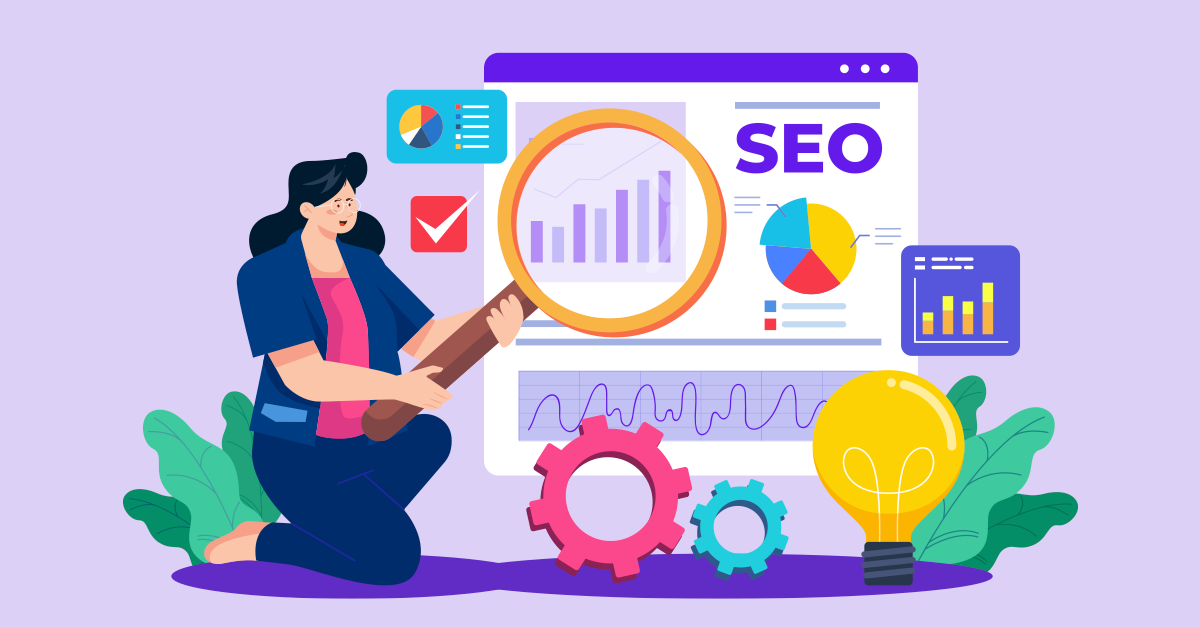
Schema Markup, essentially a code or semantic vocabulary, is added to a website to help search engines return more informative results for users. By implementing schema, webmasters can enhance how their pages are represented in search engine results pages (SERPs), potentially increasing visibility and click-through rates.
The benefits of schema markup are manifold. It enables search engines to not just crawl but also understand the content of web pages more effectively. For instance, if you’re running an e-commerce site, using schema markup can help display product information, such as price and availability, directly in search results. Similarly, for a recipe blog, schema can show star ratings, preparation time, and calorie count in the snippets shown in SERPs.
Implementing schema markup involves selecting the right type of schema from a variety of options such as Product, Article, Event, and many more, depending on the content of your page. It can be added directly to the HTML of your web pages. Tools like Google’s Structured Data Markup Helper can simplify this process by generating the required code, which you can then paste into your website’s HTML.
Once schema markup is added, it’s important to test and validate the code using tools like Google’s Structured Data Testing Tool. This ensures that Google understands the markup and can display it in search results. Remember, while schema markup does not directly impact search rankings, it can significantly enhance the appearance of your SERP listings, making them more attractive and informative to potential visitors, and potentially improving your site’s click-through rate.
Schema markup is a powerful tool in the on-page SEO arsenal. It enhances the way your pages are displayed in search results, making them more informative and appealing, which can lead to increased engagement and traffic. Given the evolving nature of search algorithms and user preferences, staying informed and implementing elements like schema markup can give you a distinct edge in the digital landscape.
14. Social Media Integration

Social signals, while not a direct ranking factor in most search engine algorithms, play a critical role in enhancing a website’s visibility and user engagement. This integration is multifaceted and includes aspects like including social sharing buttons on your content, which encourages users to share your content across their social networks. This sharing can lead to increased traffic and greater visibility, indirectly boosting your site’s authority and relevance.
Furthermore, integrating social media elements on web pages can significantly enhance user engagement. For example, embedding relevant social media feeds or user-generated content like customer reviews and testimonials can keep users on the site longer, decreasing bounce rates and signalling to search engines that your content is valuable and engaging. Additionally, leveraging social media platforms to promote content directly can help in building a community around your brand, fostering trust and authority. This increased engagement not only supports your SEO efforts but also drives broader marketing objectives by building brand awareness and loyalty.
It’s also vital to maintain a consistent presence and brand voice across both your website and social media platforms. Consistency in messaging and branding helps in establishing a recognizable and trusted online presence. By effectively integrating social media into your web pages, you not only augment your on-page SEO efforts but also create a cohesive and engaging online experience for your audience.
15. Regular Content Updates

Regular content updates are a crucial aspect of on-page SEO. This practice is not just about adding new content but also involves revisiting and refreshing existing pages. Search engines like Google favour websites that are dynamic, with fresh and updated information, as this indicates that the site is active and relevant. This can lead to better rankings in search results.
Updating content serves multiple purposes. Firstly, it ensures that your information stays current and accurate. In rapidly changing industries, outdated information can lead to a decrease in user trust and engagement. By keeping your content up-to-date, you’re not only maintaining but also potentially increasing the relevance and usefulness of your website to your audience.
Secondly, regular updates provide an opportunity to optimize content with new keywords and topics that are emerging in your field. This can help capture new search traffic and keep your site competitive in the constantly evolving landscape of search engine algorithms.
Moreover, updating content can improve user engagement. When visitors see that a site is regularly maintained with fresh and relevant information, they are more likely to return, spend more time on the site, and engage with the content. This increased engagement sends positive signals to search engines, which can further boost your site’s rankings.
Another significant aspect of content updates is the opportunity to improve the internal linking structure. As you add new content or revise old one, you can create more internal links to newer pages, enhancing the navigational structure of your site and spreading link equity throughout your pages.
However, it’s important to approach content updates strategically. Not all content requires frequent updates. Focus on pages that drive significant traffic or pages that are critical to your business objectives. Use analytics to identify which pages might benefit most from updates and prioritise accordingly.
Regular content updates are a vital element of on-page SEO strategy. They not only help in maintaining the accuracy and relevancy of your website but also contribute to improving your search engine rankings by signalling to search engines that your site is a valuable, up-to-date resource for users. By integrating this practice into your SEO routine, you can significantly enhance the effectiveness of your online presence.
16. Monitoring and Analysing Performance

Effective on-page SEO is not just about implementing strategies; it’s also about evaluating their performance. This process involves using a variety of tools to track and analyze how well your web pages are performing in search engine rankings, how users are engaging with your content, and identifying areas for improvement.
Tools for Tracking Performance
There are several tools available for monitoring on-page SEO. Google Analytics is a fundamental tool, offering insights into website traffic, user behavior, and conversion rates. Google Search Console provides specific data on search queries, click-through rates, and the health of your website in Google’s search index. Other tools like SEMrush, Ahrefs, and Moz offer more detailed analyses, including keyword rankings, backlink profiles, and competitor analysis.
Key Metrics to Monitor
It’s important to focus on the right metrics to understand the impact of your on-page SEO efforts. Key metrics include organic traffic, which reflects the number of visitors coming to your site through search engines. Page load speed is crucial as it can directly impact user experience and search rankings. Monitor bounce rates to understand if your content is engaging enough to keep visitors on your page. Keyword rankings are essential for assessing how well your pages are performing for targeted keywords. Conversion rates indicate whether your SEO efforts are translating into desired actions, such as sales, sign-ups, or downloads.
Analyzing User Engagement
Tools like heat maps and session recordings (offered by platforms like Hotjar or Crazy Egg) can provide deeper insights into how users interact with your pages. These tools help in understanding which parts of your page attract more attention and where users tend to drop off, allowing you to make data-driven improvements.
Responding to Analytics
The true value in tracking and analyzing on-page SEO performance lies in how you respond to the data. It’s about making iterative improvements. For instance, if certain pages have high bounce rates, it may indicate a need for better content or more engaging calls-to-action. If specific keywords are underperforming, it may be time to reevaluate your keyword strategy or enhance your content for better relevancy.
Ongoing Process
SEO is not a set-and-forget strategy. The digital landscape, including search engine algorithms, is always evolving. Regular monitoring ensures that your website remains in tune with these changes and continues to perform well in search rankings. It’s about adapting and refining strategies based on what the data tells you.
17. Common On-Page SEO Mistakes to Avoid
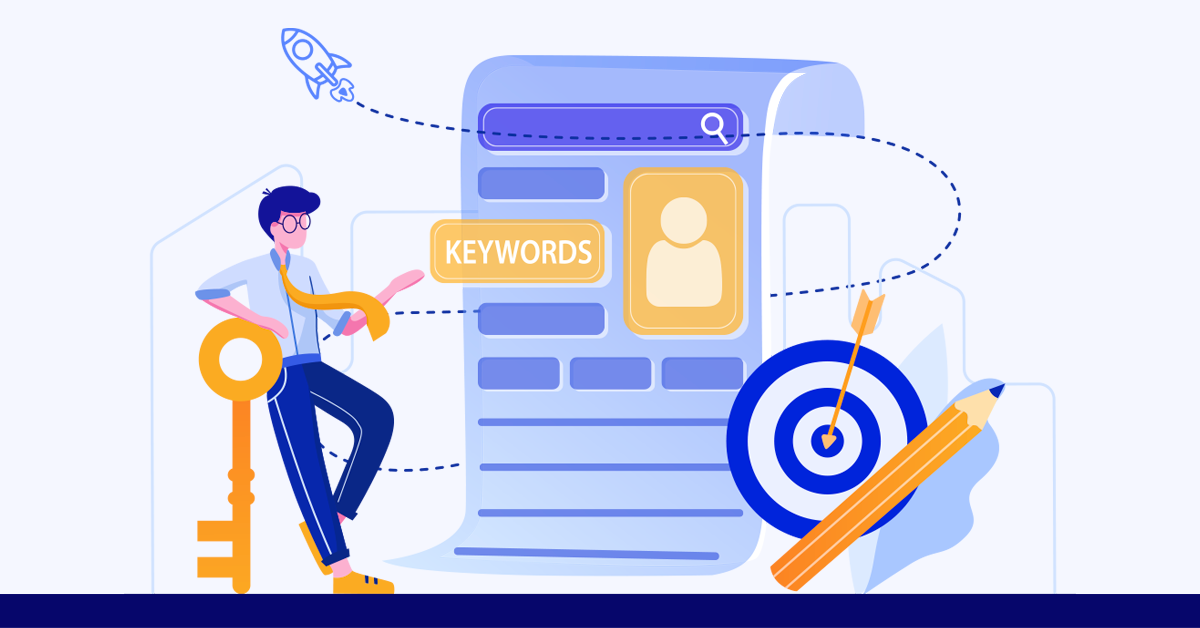
One of the most frequent on-page SEO mistakes is neglecting keyword optimization. While stuffing a page with keywords is outdated and penalised, the opposite extreme – not including relevant keywords at all – can also be detrimental. Effective use of keywords involves strategically placing them in the title tag, headings, and throughout the content in a way that feels natural and relevant to the topic.
Another common error is overlooking the importance of high-quality, unique content. Search engines favour content that adds value to users, so duplicating content from other sites or offering thin content with little value can negatively impact SEO performance. Additionally, many website owners fail to optimize their images, missing out on valuable SEO opportunities. This includes neglecting to use descriptive, keyword-rich file names and alt tags, which are crucial for image search optimization and accessibility.
A frequently overlooked aspect is the user experience (UX). Websites that are difficult to navigate, have a poor mobile experience, or load slowly can suffer in search rankings. Page load speed, in particular, is a critical factor; slow-loading pages can increase bounce rates and reduce the likelihood of users engaging with the content.
Moreover, many site owners ignore the power of internal linking. Internal links not only help in spreading link equity throughout the site but also aid in site navigation and establishing information hierarchy. However, it’s important to use relevant anchor text and not to overdo it with too many internal links.
Lastly, some website owners fail to keep their content updated. Regularly updating content keeps it relevant and can improve its visibility in search results. This includes updating outdated information, adding new sections, or improving readability.
Avoiding these common mistakes can significantly enhance on-page SEO efforts, leading to better search engine rankings and improved website traffic.
Conclusion

On-page SEO is a crucial component of a successful digital marketing strategy. It encompasses a range of practices, from keyword optimization to improving user experience, each playing a vital role in boosting your website’s visibility and ranking on search engines. By implementing these strategies, you can significantly enhance the likelihood of your site appearing in top search results, attracting more traffic, and ultimately, achieving your business goals.
However, mastering on-page SEO requires time, expertise, and continuous effort. This is where WDD Malaysia steps in to bridge the gap. As specialists in custom website optimization, our team at WDD Malaysia is equipped with the knowledge and tools to elevate your website’s performance. We understand the nuances of SEO and are committed to implementing strategies that are tailored to your unique business needs.
With WDD Malaysia, you get a partner who is dedicated to understanding your business objectives and translating them into a robust online presence. Our comprehensive approach to on-page SEO includes detailed keyword analysis, content optimization, technical SEO, mobile optimization, and much more. We stay abreast of the latest trends and algorithm changes, ensuring your website not only climbs the rankings but also maintains its position at the top.
Whether you’re launching a new website or looking to improve an existing one, WDD Malaysia is here to assist you every step of the way. Our team is passionate about helping businesses like yours achieve their full online potential. Contact us today to learn how we can transform your website into a powerful asset that drives growth and success.
Take the first step towards a higher ranking and a more visible online presence. Reach out to WDD Malaysia, and let us help you optimize your custom website to its fullest potential. Your journey to the top of search engine results starts here!



